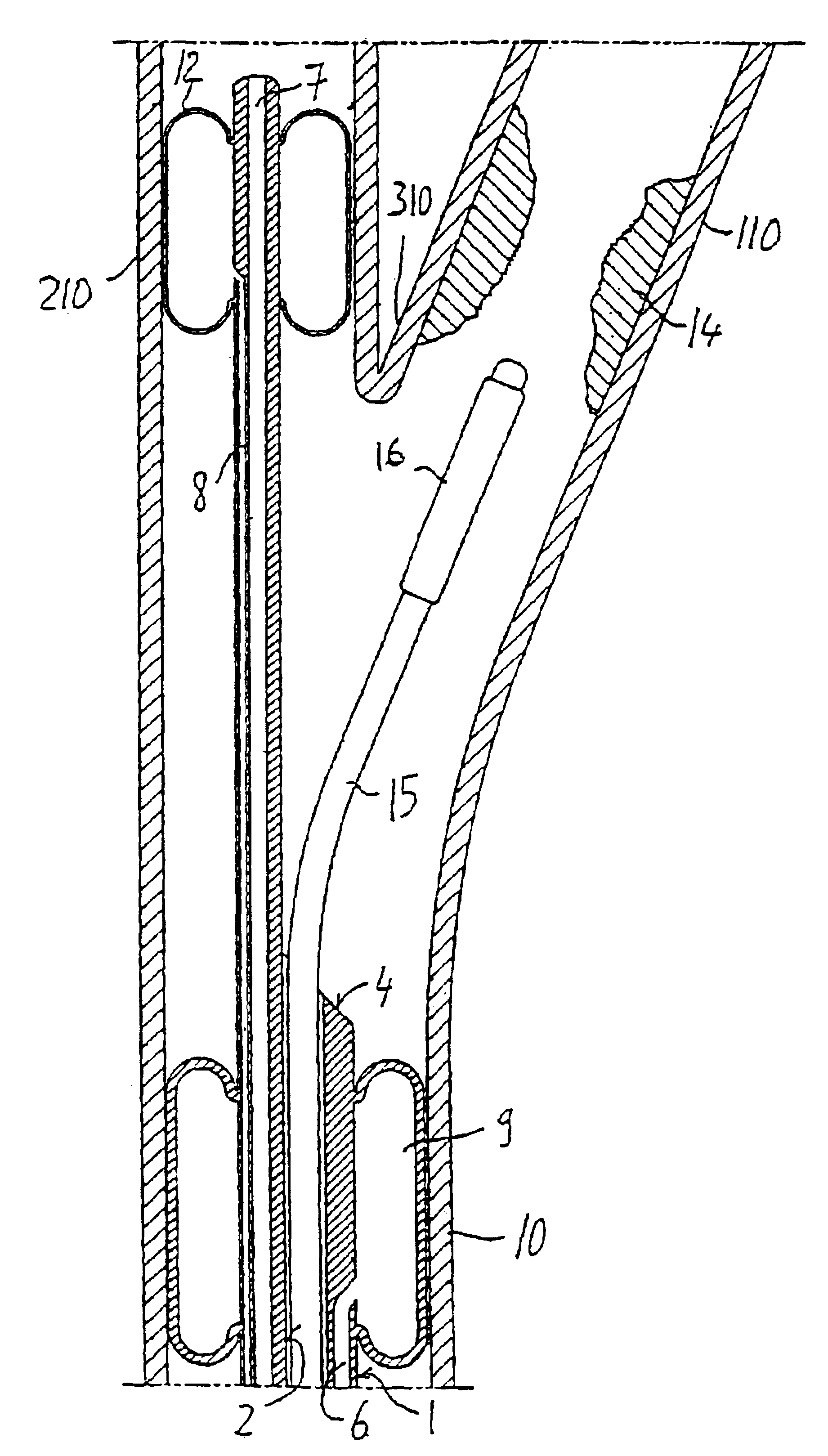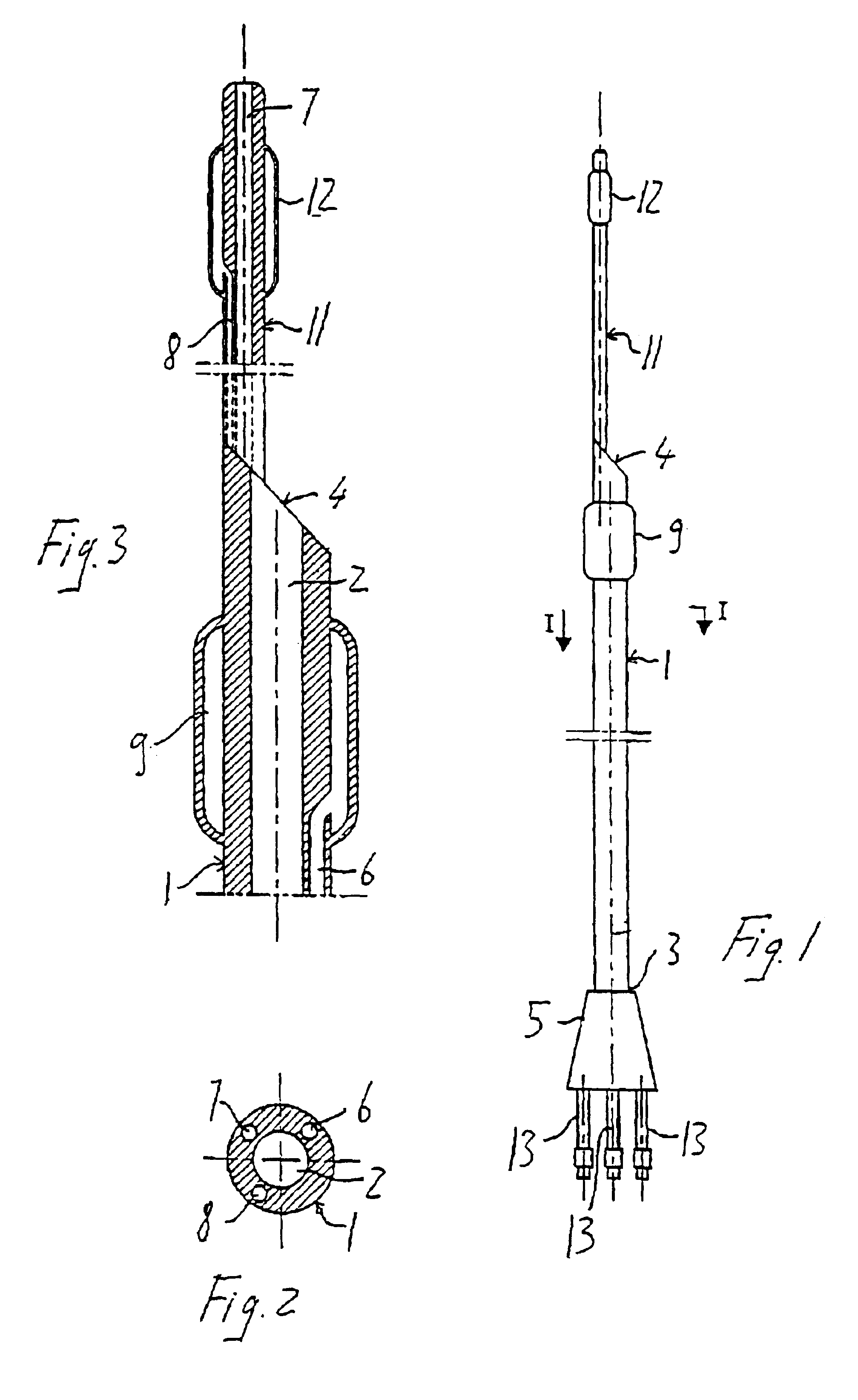Endovascular system for the treatment of stenoses of the carotid and catheter for this system
a carotid and endovascular technology, applied in the field of catheters, can solve the problems of serious embolism, serious brain damage, and affecting the abovementioned organs, and achieve the effect of safe conventional surgery
- Summary
- Abstract
- Description
- Claims
- Application Information
AI Technical Summary
Benefits of technology
Problems solved by technology
Method used
Image
Examples
Embodiment Construction
[0053]With reference to the figures, and at the moment particularly to FIGS. 1-4, a catheter according to the invention comprises a long, hollow, flexible tubular body 1. The tubular body 1 may comprise one or more tubular bodies, but in the preferred embodiment it comprises a single tubular element which has a central luminal duct 2 which extends from a connecting end, known as the proximal end 3, to an insertion or distal end 4.
[0054]The tubular body 1 may be made, for example, by means of extrusion of a small and flexible material such as nylon, polyurethane, urethane, polyethylene, polyvinyl chloride (PVC), polyamides or the like, which allows the tubular body 1 to bend for easy positioning inside the vessel inside which the said body must be positioned.
[0055]The external diameter of the tubular body 1 may be or the order of about 10-13 French (about 3-3.9 mm), and in any case preferably not greater than 13-14 French (3.9-4.2 mm), but may vary depending on the specific requireme...
PUM
 Login to View More
Login to View More Abstract
Description
Claims
Application Information
 Login to View More
Login to View More - R&D
- Intellectual Property
- Life Sciences
- Materials
- Tech Scout
- Unparalleled Data Quality
- Higher Quality Content
- 60% Fewer Hallucinations
Browse by: Latest US Patents, China's latest patents, Technical Efficacy Thesaurus, Application Domain, Technology Topic, Popular Technical Reports.
© 2025 PatSnap. All rights reserved.Legal|Privacy policy|Modern Slavery Act Transparency Statement|Sitemap|About US| Contact US: help@patsnap.com



